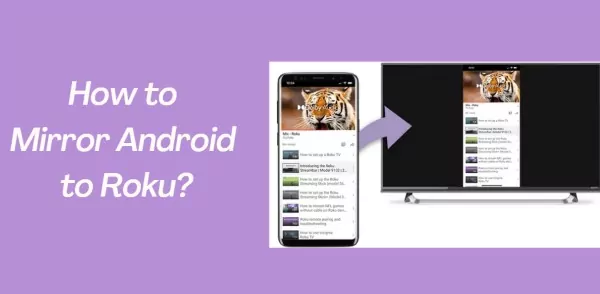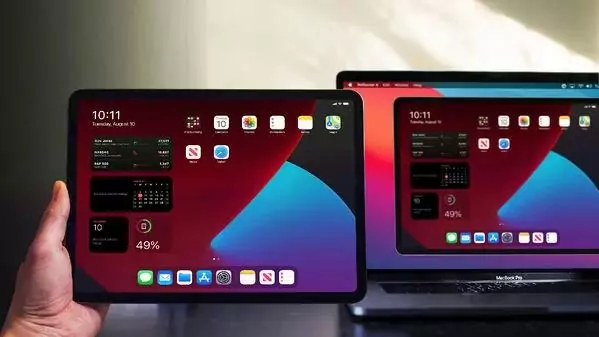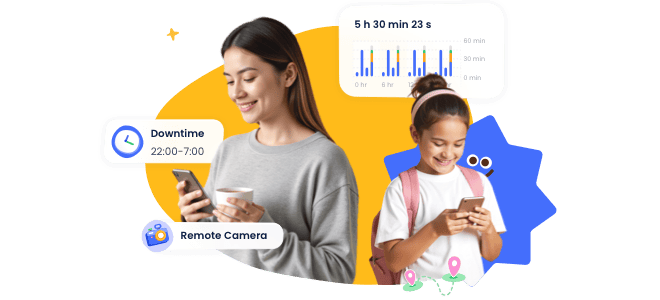Inside Location Sharing: Testing on Apple, Google, & Samsung Devices - Part 2
In the last article, we provided an in-depth overview of the location-sharing features offered by three major brands—Apple, Google, and Samsung. Now, it's time to delve deeper into how these features perform in real-time scenarios.
Many of us share our real-time locations with friends and family, but how do these different phone brands compare? Let's find out how well they perform in real-time location sharing.
Location Data Acquisition
Location data is important for navigating the ways. It helps understand someone's location by keeping an eye on the signals. The three tech giants, Apple, Samsung, and Google, have their own systems for acquiring location data.
Google Maps Location Sharing
✅Location Data Acquisition for Real-Time Sharing
In my hands-on testing, Google Maps excelled in acquiring and utilizing location data to power its real-time sharing capabilities. The app seamlessly combines data from GPS, Wi-Fi, and cellular networks to deliver precise location information, crucial for keeping real-time updates accurate and timely.
✅Technology Behind Data Acquisition
Google Maps utilizes a sophisticated approach to integrate multiple data sources. GPS serves as the primary source for location data, offering high accuracy in open outdoor spaces. Meanwhile, Wi-Fi and cellular networks enhance precision indoors or in areas where GPS signals are weaker. This layered approach ensures that the location data remains robust and reliable, forming the backbone of effective real-time sharing.
✅Real-Time Data Processing
The app's real-time data processing is enhanced by Google's machine learning algorithms, which dynamically adjust updates based on detected movement patterns. This technology ensures that shared location information is up-to-date and reflects current positions accurately, even when moving quickly or navigating through complex environments.
Family Link Location Sharing
✅Location Data Acquisition for Real-Time Sharing
In my hands-on testing, Google Family Link showcased its technical prowess in gathering location data for effective real-time sharing. By leveraging a combination of GPS, Wi-Fi, and cellular networks, the app ensures that parents receive precise and continuous updates about their child's location.
✅Technology Behind Data Acquisition
Family Link employs an integrated approach to location data acquisition. GPS offers detailed outdoor tracking, while Wi-Fi and cellular networks fill in the gaps, especially in indoor settings or areas with limited GPS coverage. This combination ensures that location data is consistently accurate, forming a reliable basis for real-time updates.
Find My
✅Advanced Location Data Acquisition
In my testing, Apple’s Find My app excelled in gathering accurate location data for real-time sharing. The app combines several technologies to ensure timely and precise updates, making it a reliable choice for tracking loved ones.
✅Bluetooth and Ultra-Wideband (UWB) Integration
Bluetooth. Find My uses Bluetooth to connect with nearby Apple devices, enhancing location accuracy even in areas where GPS signals struggle.
UWB. Ultra-Wideband technology provides precise indoor location tracking, useful for locating items like AirTags with high accuracy.
✅Crowdsourced Location Updates
Find My leverages a network of Apple devices to update the location of offline devices. This crowdsourcing ensures that location information remains current, even when direct connectivity is lost.
✅Adaptive Update Frequency
The app intelligently adjusts how often it updates location data based on movement. This means fewer updates when stationary to save battery, and more frequent updates when on the move, ensuring continuous real-time tracking.
Family Sharing
✅Integrated Family Connectivity
In my testing, Family Sharing provided a cohesive way to keep track of family members in real-time. This feature allows family members to share their location and foster a sense of connection and safety within the family unit.
✅Utilization of Apple Ecosystem
Family Sharing makes full use of Apple's ecosystem, leveraging iCloud to sync location data across all family members' devices. This ensures that location updates are consistently accurate and available to all authorized users.
✅Simple Setup and Management
Setting up location sharing within Family Sharing is straightforward, with intuitive controls that allow users to manage permissions easily. This simplicity ensures that even less tech-savvy family members can participate without hassle.
Samsung Find App
✅Efficient Device Tracking
During my testing, the Samsung Find App excelled at providing real-time location updates for tracking Samsung devices. This feature is particularly useful for locating lost devices quickly, ensuring that users can retrieve their belongings with minimal hassle.
✅Use of Samsung’s Device Network
The app leverages Samsung’s extensive network of devices to enhance location accuracy. By connecting with nearby Samsung devices, the Find App can triangulate the location of a lost device, even if it’s offline, ensuring continuous tracking capabilities.
Samsung Find My Mobile
✅Comprehensive Location Services
In my hands-on experience, Samsung Find My Mobile provided robust real-time location sharing for device recovery and security. The service allows users to track their devices’ movements, offering peace of mind whether devices are misplaced or stolen.
✅Integration with Samsung Account
Find My Mobile integrates seamlessly with Samsung accounts, providing a centralized platform for managing device location settings. This integration facilitates easy access to location services and enhances the user experience by offering consistent functionality across devices.
Algorithms and Machine Learning
Algorithms and machine learning are key to making location-sharing features better. They help improve accuracy, predict where users are going, and make data processing more efficient. These technologies allow services to give real-time updates and adjust to different environments, ensuring users get reliable and precise location information.
Google Maps
✅Predictive Movement Algorithms
Google Maps leverages advanced machine learning models to predict user movements, enhancing the accuracy of real-time location updates. These algorithms analyze historical movement patterns and current data to anticipate changes, ensuring that users receive timely and precise navigation guidance.
✅Dynamic Traffic Analysis
Machine learning is used to analyze traffic patterns in real time, allowing Google Maps to adjust ETAs and suggests alternative routes. This capability ensures that users are informed of the fastest routes, adapting to traffic conditions dynamically for optimal travel efficiency.
Family Link
✅Behavioral Pattern Recognition
Google Family Link employs algorithms that recognize behavioral patterns to provide parents with insights into their children's movements. By analyzing location data over time, the app can alert parents to unusual activity, enhancing child safety and parental awareness.
✅Adaptive Location Updates
The app uses machine learning to adjust the frequency of location updates based on context, such as time of day or typical movement patterns. This adaptability ensures that parents receive relevant information without unnecessary notifications, optimizing both data usage and user experience.
✅Real-Time Data Processing
Google's advanced algorithms power the real-time processing capabilities of Google Family Link. These algorithms dynamically adjust and filter the incoming data to minimize latency and improve accuracy. For instance:
Kalman Filtering This mathematical technique is employed to predict the child's movement based on previous location data, smoothing out any abrupt changes and providing a more stable location update.
Data Fusion By integrating data from GPS, Wi-Fi, and cellular sources, the app can cross-verify the location information, reducing errors and ensuring that parents receive reliable updates even in challenging environments.
Find My
✅Crowdsourced Data Processing
Find My utilizes algorithms to process crowdsourced data from nearby Apple devices, enhancing the accuracy of location tracking. This approach allows the app to locate devices even when they are offline, leveraging the collective power of the Apple ecosystem for precise tracking.
✅Anomaly Detection
Machine learning models in Find My can detect anomalies in location data, such as unexpected device movements. This capability helps users quickly identify and respond to potential security issues, ensuring that their devices remain secure.
Family Sharing
✅Location Contextualization
Family Sharing uses algorithms to contextualize location data, linking it with other family activities and shared content. This contextualization allows family members to receive location-based reminders or notifications, enhancing coordination and family engagement.
✅Predictive Alerts
Machine learning enables Family Sharing to provide predictive alerts based on family members' typical movements. For example, the app can notify users when a family member is approaching home, facilitating better planning and communication.
Samsung Find App
✅Multi-Source Data Fusion
Samsung Find app employs algorithms to fuse data from multiple sources, such as GPS, Wi-Fi, and Bluetooth, for enhanced location accuracy. This fusion process ensures that users receive precise location updates, even in challenging environments where signals may vary.
✅Real-Time Anomaly Detection
The app uses machine learning to identify anomalies in device location, such as unexpected movements. This feature provides users with timely alerts, allowing them to take action if a device is moved without authorization.
Samsung Find My Mobile
✅Predictive Geofencing
Find My Mobile uses machine learning to enhance geofencing capabilities, predicting when a device is likely to enter or leave a designated area. This predictive approach ensures that users receive timely alerts, improving device security and user awareness.
Data Processing and Accuracy
In location sharing, data processing and accuracy are key to providing reliable and precise updates. Effective algorithms and techniques ensure that shared locations are accurate, reflecting real-time movements and changes in the environment.
Google Maps
✅Real-Time Correction for Shared Locations
Google Maps uses advanced error correction algorithms to ensure that shared locations are precise. By continuously refining data through real-time user inputs, Google Maps can provide accurate location sharing, even in challenging environments like urban areas with signal interference.
✅Crowdsourced Data Enhancement
The app benefits from crowdsourced data, constantly updating and refining its database to enhance the accuracy of shared locations. This ensures users receive the most current and reliable information when sharing their location with others.
Family Link
✅Contextual Accuracy in Family Sharing
Google Family Link processes location data with a focus on context, analyzing typical movement patterns to provide more accurate updates. This contextual processing helps parents receive precise location information when sharing their child's whereabouts.
✅Filtered Location Snapshots
The app filters out noise to deliver clear and concise snapshots of a child's location, ensuring that shared information is both accurate and relevant for parental monitoring.
Find My
✅Device Synchronization for Accurate Sharing
Find My synchronizes data across all Apple devices in a user's account, enhancing the accuracy of shared locations. This synchronization ensures that users can share precise location updates with family and friends.
✅Adaptive Accuracy in Varied Environments
The app adapts its accuracy based on environmental factors, using nearby Apple devices to refine shared location data. This adaptability ensures reliability, even in areas with poor GPS coverage.
Family Sharing
✅Consistent Sharing Across Family Devices
Family Sharing maintains consistent data across all shared devices, ensuring accurate location sharing among family members. This consistency allows families to rely on precise updates for coordination and planning.
✅Movement-Based Update Refinement
The feature refines location updates based on detected movement, ensuring that shared locations are timely and accurate, enhancing the family’s ability to stay connected.
Samsung Find App
✅Cross-Referenced Data for Sharing Precision
Samsung Find App cross-references data from multiple sources to validate the accuracy of shared locations. This validation provides users with reliable updates, crucial for effective location sharing.
✅Real-Time Calibration for Shared Accuracy
The app calibrates location data in real time, ensuring that shared locations are accurate despite environmental changes. This calibration is vital for maintaining consistency in location sharing.
Samsung Find My Mobile
✅Precision in Shared Geolocation
Find My Mobile uses enhanced geolocation techniques to ensure precise location sharing. By integrating sensor data, the service provides accurate shared locations, even in complex environments.
✅Error Mitigation in Location Sharing
The service employs error mitigation strategies to maintain accuracy in shared location data, filtering out erroneous signals to ensure users receive dependable updates.
Conclusion
Anyone can share real-time locations from their smartphones, but not many of them understand how it works. With this article, we tried to share information about the technology that helps share real-time locations on Google, Samsung, and Apple devices. So, did you understand everything?
Next, we'll continue to dive into the location history section of these methods.















Leave a Reply.